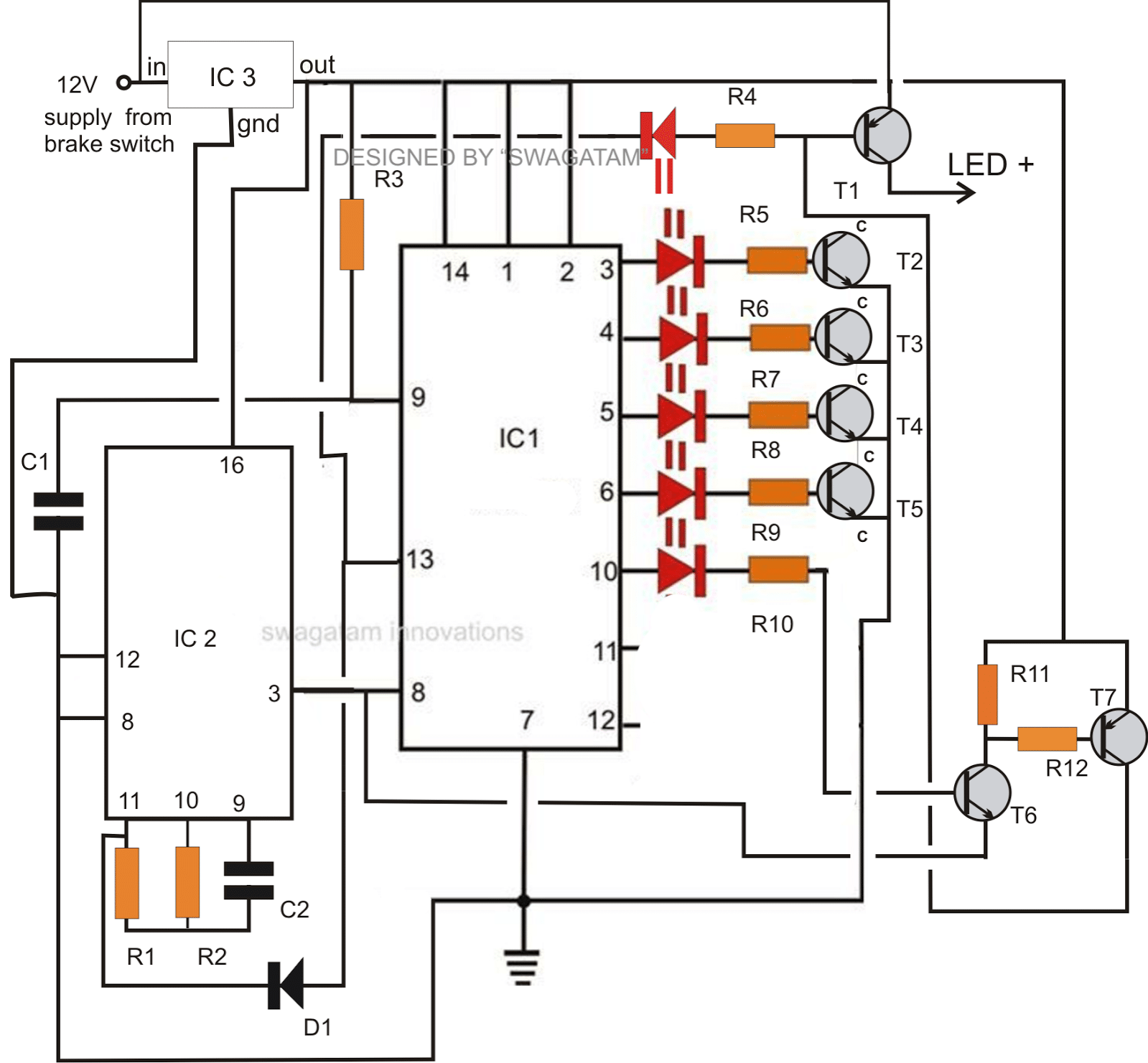In the following post I have explained a fancy LED sequencing/diverging ring light circuit which can be used as a tail brake light in cars. The idea was requested by one of the avid readers of this blog, Mr. Bobby. I have explained more.
Technical Specifications:
Hello,
I was just reading thru your wonderful article on building an LED chasing tail light:https://www.homemade-circuits.com/how-to-make-car-led-chasing-tail-light/
Could this circuit be adapted to create a round tail light that lights rings in sequence from the center out as the brake is pressed, one ring at a time until all the LEDs are lit and then flash all the LEDs twice and keep all LEDs lit solid after? If not, could you design a circuit that would?
I would be willing to pay for your time.
Thank you,
Bobby
The Design
The circuit diagram shown below has been designed as per the above request, I have explained its functioning with the following points:
IC1 which is a "serial shift resistor" forms the heart of the entire circuit, the main function of this IC is to illuminate the LEDs connected to pin outs #3-4-5-6-10-11-12-13 in a sequence, keeping the sequence latched and illuminated as it proceeds. This happens in response to each clock pulse applied at pin#8 of the IC.
The LEDs which are triggered by the pin#3-4-5-6 and 10 are arranged as rings such that it illuminates from inner most ring first toward the outermost ring, producing an interesting and visually rich effect.
And that's not all, after the above effect the whole illuminated group of arrays flash thrice and then shut off.
The above "show" repeats every time brakes are applied.
When brakes are applied, battery voltage connects with the circuit initiating the following operations:
C1 resets IC1 such that the sequence begins from pin#3 and not from any other in between pin out (this output illuminates the inner most ring).
IC2 is an oscillator IC which generates the required clocks for the IC1 from its pin#3.
In response to the above clocks, the sequence proceeds creating the desired diverging illumination effects, until it reaches pin#10.
The LEDs receive the required positive supply through T1 which stays triggered due to the low logic at pin#13 of IC1
When the sequence reaches pin#10, T6 conducts which also switches ON T7.
The emitter of T6 is connected to pin#3 of IC2 which is already generating the clocks for the required of IC1.
The alternating low pulse from this pin out switches T6/T7 in a blinking mode.
T7, in response to the above blinking, sends correspondingly pulsating positive pulses to base of T1.
This in turn forces T1 to flash the LEDs in accordance with the above influence.
The illuminated ring arrays start flashing until the sequence is forwarded to pin#13.
The moment pin#13 becomes high, T1 switches OF and also the "high" reaches pin#11 of IC2.
IC2 locks and stops the clocks at pin#3.
The whole operation freezes.
The above system breaks and repeats itself only as soon as the brakes are released and pressed afresh.

The LEDs which needs to be connected across the collectors of T1 and T2/T3/T4/T5 may be wired up in the following manner. The arrangement should be designed in a circular manner to form the corresponding RINGs.

Parts List
- R1 = 2M2
- R2 = TO BE EXPERIMENTED
- R3 = 1M
- R4---R12 = 2K2
- T1 = 8550 or 2N2907
- T2----T6 = BC547
- T7 = BC557
- D1 =1N4148
- C1,C2 = 0.1uF
- IC1 = 74LS164
- IC2 = 4060
- IC3 = 7812
ALL LEDS = RED 5MM, ASSOCIATED RESISTORS ARE ALL 150 OHMS, 1/4 WATT